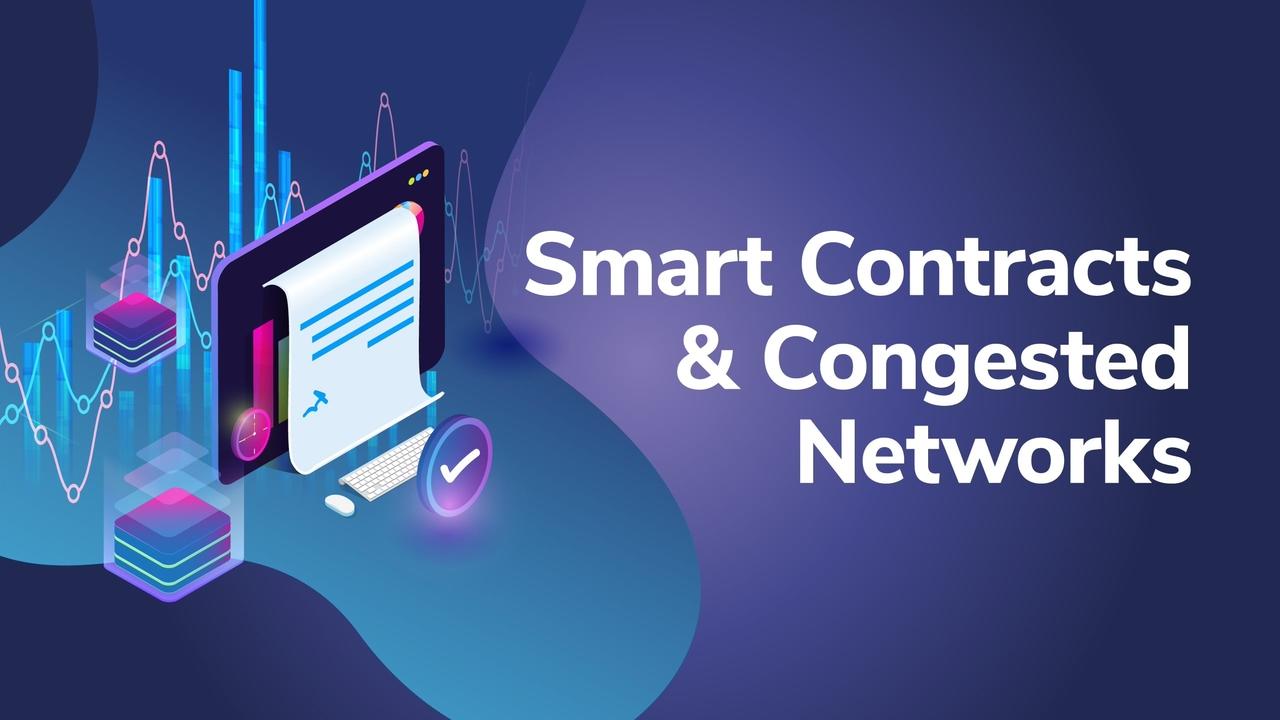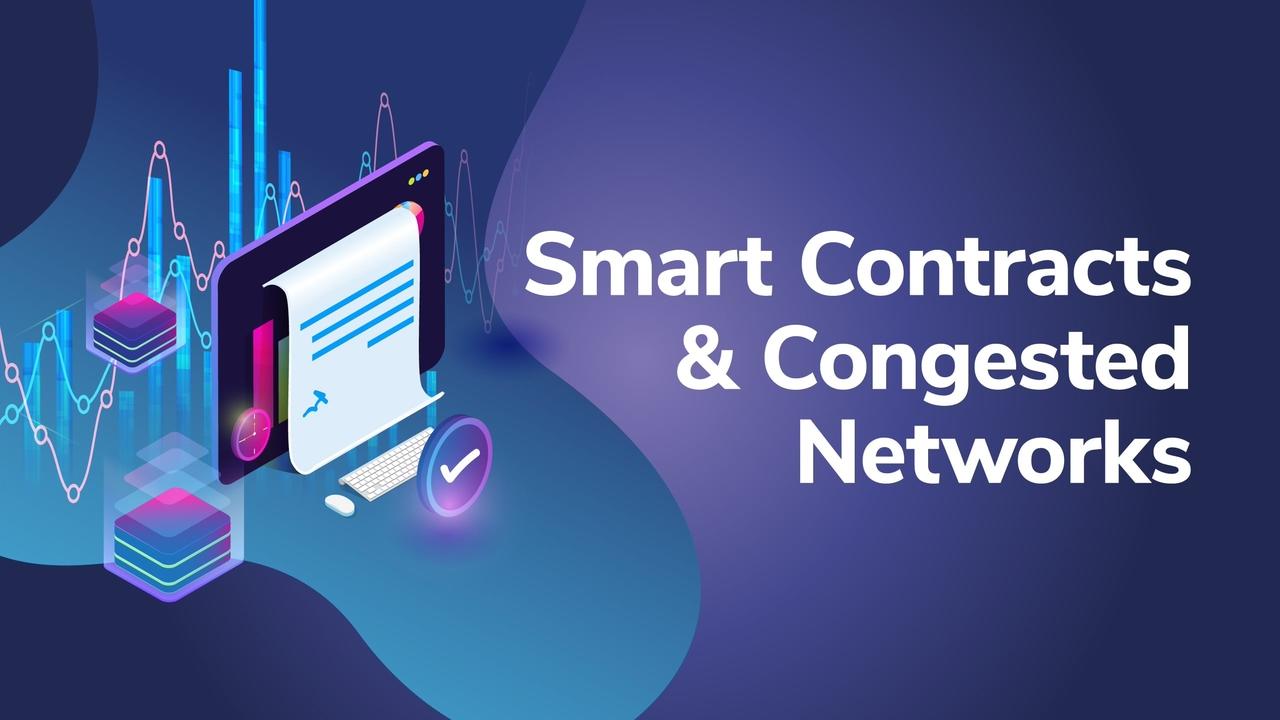
As much as the growing popularity of blockchain and smart contract platforms is good for the crypto industry, it also contributes to certain problems. Most notably, the demand for decentralized applications (dApps) and decentralized finance (DeFi) is at a crucial stage where it outweighs the ability to supply. A simple economic analysis of the supply and demand curve, therefore, results in a skewed equilibrium. The disruption between supply and demand, in turn, creates a situation where we see congested smart contract networks.
As Ethereum is the biggest smart contract platform it is, perhaps, the most well-known network to experience the problems of a congested network. To run an application on the Ethereum blockchain, a dApp user needs to pay gas. Essentially, since there is not enough gas to drive the demand for DeFi and dApps, the price has skyrocketed. In this article, we are going to clarify the problem and explore some of the potential solutions to this problem.
Looking to learn more about smart contracts before diving deeper into congested networks? If so, you should check out Ivan on Tech Academy’s course on Ethereum 101 and Ethereum Smart Contract Programming. What are you waiting for?
Ethereum and Smart Contracts
The first step in understanding why the network is overcrowded and why this creates a major problem is to understand Ethereum as a smart contract platform. Smart contracts are essentially code that self-execute once specific conditions are fulfilled. A smart contract is, therefore, a program on a blockchain that is an accumulation of data and code. In this case, that is the Ethereum blockchain.
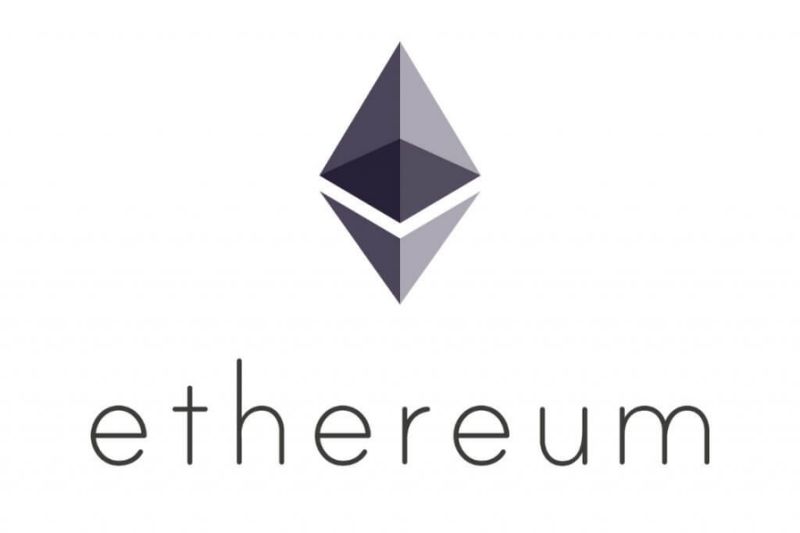
On the Ethereum network, a smart contract is actually an account. The reason for this is because the contract can receive and transfer money along with having a balance. However, this account is not run by a user but is instead run by the code that the contract contains. Furthermore, users on the network can then interact with the smart contract accounts. The code is then executed, automatically enforcing the terms of the agreement.
Smart contracts provide users with the same functionality as regular contracts. However, the difference is that the code enforces the terms instead of a middle man, and without having to rely on an intermediary. This means that smart contracts can help businesses save a vast amount of money.
Most industries can benefit from smart contracts since it can automate a lot of functionality and cut out intermediaries. Maybe the most obvious industry is the financial sector, where DeFi is growing at a rapid rate. However, smart contracts can be applied to other areas such as healthcare. Within the healthcare industry, smart contracts can help with storing information like medical records.
Ethereum Gas
For any program such as a smart contract to function on the Ethereum blockchain, it requires something known as gas. The gas measures the amount of computing power that a program uses. In order to use this power, the user of a contract needs to pay a fee depending on the gas spent.
An appropriate analogy is to look at a program on the Ethereum network as a car. The car needs gas to function correctly, and so does a smart contract. If the program does not receive sufficient fuel for the amount of computing power that it uses, the program will stop moving forward.

Along with measuring the amount of computing power that a contract needs and making sure that that program is functioning, gas has another important task. Gas also helps the Ethereum network to be more safe and secure. Since the network requires a fee for any program deployed, it prevents users from spamming the system. Each of the transactions on the network, therefore, requires a limit on how many computations can be made. This limit, in turn, prevents contentious computational wastage and infinity loops.
As the gas is used as payment for the usage of a contract, the same gas is also used as payment for the people supplying computational power. This also means that gas is a form of incentive that attracts users of the network to confirm and mine blocks in the chain. The miners are, therefore, supplying their computational power to validate smart contracts in the system.
Ethereum Gas Price
As for all products and services, when demand is higher than the supply, the price will increase. Due to the higher demand for usage of more complex smart contracts, the price is higher than ever.
Some of the most popular smart contracts on the Ethereum blockchain are the decentralized exchange Uniswap and stablecoin USDT. These two programs require a lot of gas. Since these platforms or programs are popular, the users must pay a high fee to make sure that their transactions are executed faster.
The cost for a transaction has increased from a 7-day average of 8 cents at the beginning of the year to a cost of 91 cents. This is an increase of more than 1000%, huge considering that you need to pay more than ten times the price from the beginning of the year.
The drastic increase in prices is causing problems for smaller players since they can not afford to utilize contracts. This goes against one of the most fundamental ideas of DeFi, which is that no one is excluded. Too high prices mean that not everyone can participate in the system, and this is a major problem.
The situation is not going to solve itself as more users are entering the system at the same time as more complex contracts are being deployed. These two factors are what is contributing to the congested smart contract networks like Ethereum now are experiencing. So, what can be done to solve this problem?
Solving Congested Smart Contract Networks
Whenever a business is operating in a free market and the demand exceeded the supply, there are a few scenarios that can occur. Two of the most likely scenarios are (1) that competitors develop to solve the rest of the supply, or (2) that the existing organization develops to fill the void.
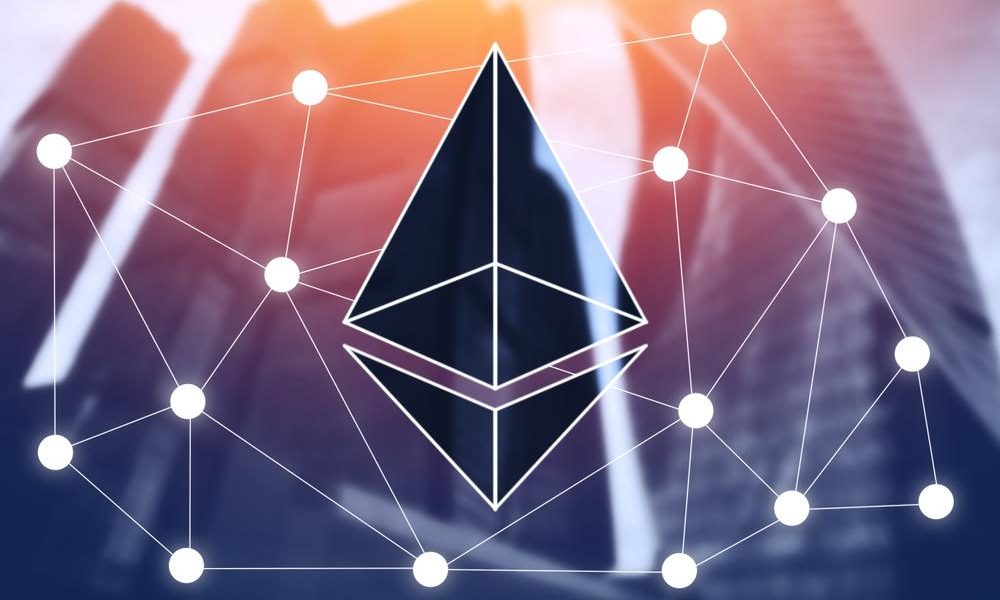
In the case of the congested network that is currently occurring regarding Ethereum, both these scenarios are currently playing out. There has been a development of new platforms that also supply the opportunity for smart contracts, and we have seen a development from Ethereum’s point of view. So, let’s go through a few of the effects of congested smart contract networks.
Ethereum Competitors
There are several big platforms available on the market that allow users to develop smart contracts. Two of the biggest are RSK and EOS, and we are going to take a closer look at how they work and what they are doing differently from Ethereum.
Rootstock (RSK) Smart Contract Platform
Rootstock is a platform for developing smart contracts, and it utilizes something the community is referring to as sidechain technology. This means that the platform is connected to another blockchain via a sidechain. In the case of RSK, the blockchain to which the platform is connected is Bitcoin. Through this technology, RSK is able to deliver smart contract functionality to the Bitcoin blockchain.

The RKS virtual machine allows the application of smart contracts developed in Solidity (the programming language used for Ethereum development) to be applied to the Bitcoin system. RSK, therefore, brings together the best of two worlds, the functionality of Ethereum and the security of the Bitcoin blockchain.
One great functionality that RSK offers is that it allows crossing ERC20 tokens between the networks. This function is called a Token Bridge, and it lets users basically take advantage of lower fees and more secure networks and they can choose when to utilize this function. This works since the bridge’s smart contract locks the original tokens on the original chain. Then the bridge creates an event and sends it to the bridge on the other chain. Once a majority of the federates have voted, the bridge will emit ERC777 tokens on the new chain for the same amount as the tokens locked in the original chain. The newly emitted tokens are then compatible with ERC20 tokens allowing for the same, plus even more, functionality.
So, due to the increase in demand on the Ethereum blockchain the prices there are way higher than the prices on RSK. This means that people can leverage this advantage and use the transaction fees from RSK, meanwhile drawing from the advantages of the Ethereum network.
EOS Smart Contracts
EOS describes itself as a platform that is a decentralized operating system that can be used by developers to create decentralized applications. Two components build up the system; the EOS tokens and EOS.IO, where the latter is the operating system that controls and regulates the EOS blockchain.
The tokens are an important part of the systems since holding on or locking in the tokens makes the holder eligible to use the resources of the network. Holding or staking the tokens also allow the holder to rent out their bandwidth to other developers on the platform.

However, staking does not automatically mean that you can create smart contracts on the network. Along with this, the user also needs to purchase RAM, a resource that is required for development in the EOS system. RAM provides the function to store an in-memory database that makes smart contracts possible on the network.
The internal RAM system holds the supply of RAM at a steady level. The price is set by the system and is based on the availability of the RAM supply. According to the EOS Resource Planner, RAM will go for around $0.154 per KiB.
Ethereum’s Solution to Congested Smart Contract Networks – Ethereum 2.0
To solve some of the problems with a congested network, Ethereum decided to develop its platform and introduce Eth2, or Ethereum 2.0 and proof-of-stake. This is an upgrade to the blockchain which allows for more speed, scalability, and efficiency. These characteristics will most likely contribute to solving the congestion problem.
One of the biggest differences between Ethereum 1.0 and Ethereum 2.0 is that they move from a proof of work (PoW) to a proof of stake (PoS) consensus mechanism. For the PoW consensus mechanism, miners need to solve a complicated mathematical problem and verify the transaction. The first miner that manages to solve the problem will then receive the PoW. As a reward for this process, the miner then receives a reward in the form of cryptocurrency.
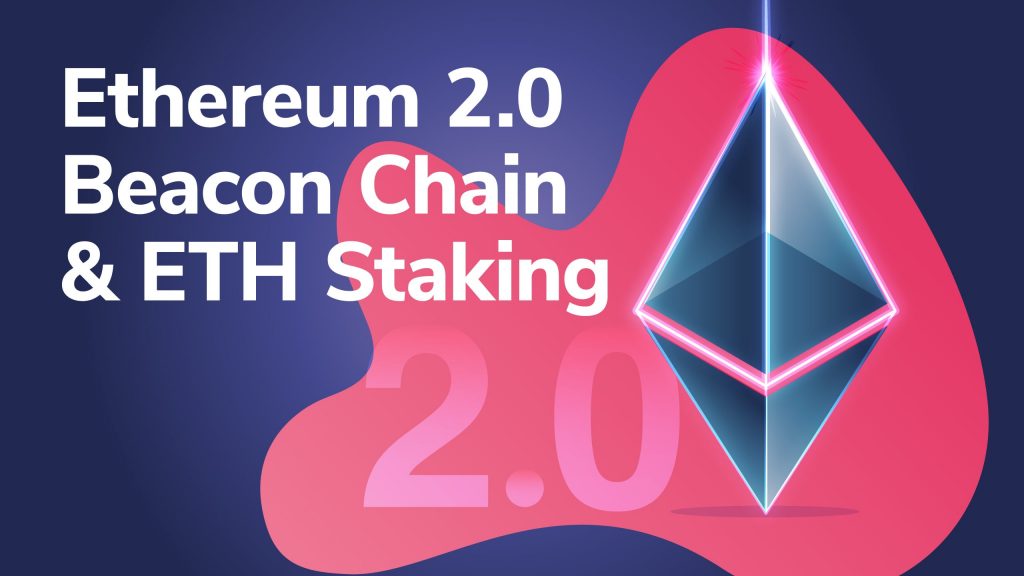
However, PoW processes require a vast amount of energy and are, therefore, inefficient. Instead, PoS has been developed to combat this problem. In this system, the validator is selected based on how much the user stakes and for how long they have staked their coins. The biggest benefit is that it is much more energy-efficient and that not as much computing power is needed to validate a block.
Another major update is the scalability of Ethereum 2.0. In Ethereum 1.0, the system can only support around 30 transactions every second, which is a contributor to congested smart contract networks. However, with the update, they promise that the system will be able to process up to 100,000 transactions every second.

However, one of the issues with PoS is that blockchains using this mechanism often have a lower amount of validators. A low amount of validators means that the system becomes more centralized. To battle this, Ethereum has set a minimum limit of 16,384 validators.
Conclusion on Congested Smart Contract Networks
The congested network is a problem that can hinder the development of the crypto industry and decentralized applications. Luckily there are smart people out there working on different solutions to this problem.
New platforms such as RSK and EOS are developing to fill in the gap between supply and demand for smart contract platforms. Along with the development of new platforms, we are also seeing the development of existing networks such as Ethereum 2.0. Two different approaches to solving a common problem that might be equally important for the future development of the industry.
If you would like to learn more about Ethereum, smart contracts, or blockchain in general, the place to go is Ivan on Tech Academy which is the best blockchain education platform. Ivan on Tech Academy offers several blockchain courses, for both novice and more experienced programmers so do not hesitate to apply!
